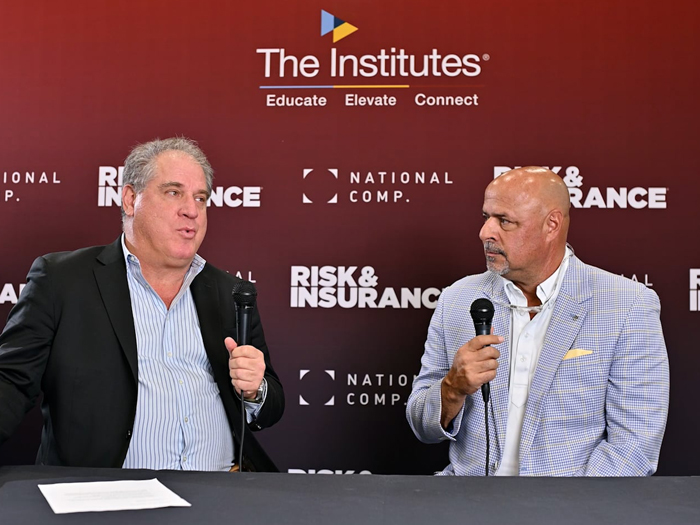Growing Needs, Rising Risks: Addressing the Unique Challenges of Memory Care
The U.S. is witnessing a significant shift in its demographic landscape as its population ages. This year, a record number of Americans will celebrate their 65th birthday, marking an unprecedented milestone in our history.
This surge in the senior population is fueling increased demand for senior living facilities, particularly memory care facilities, which play a vital role in delivering specialized care to individuals grappling with cognitive impairments such as Alzheimer’s disease and other forms of dementia. In fact, it’s projected that by 2040, nearly 12 million Americans could have dementia, and by 2060, 14 million could have Alzheimer’s disease.
Despite the pressing need for memory care services, these facilities are highly susceptible to market challenges, like staffing shortages and high costs, and bear unique risks associated with the diseases they cater to.
Insurance professionals can help safeguard these important services by bringing the right insurance and risk mitigation strategies to the table to help protect against their complex risks — but that process starts with knowing where to look.
Establish Expectations Early
A critical but often missed aspect of every facility’s risk mitigation strategy should be setting realistic expectations with residents and family members during the up-front admissions process. This should include:
- Sharing information about the level of services and care offered
- Educating family members about the natural risks and declines associated with diseases
- Maintaining ongoing communication and care updates
Taking time to complete these steps can help not only to initiate an individualized plan of care for the resident but also to protect the facility and staff’s reputation and prevent costly liability claims. Without a clear and realistic understanding of this information, family may perceive facility and staff as the reason for the decline.
Let me share a professional liability case as an example: A memory care facility was hit with a hefty medical liability claim due to alleged staff negligence that resulted in a patient’s dehydration, then a urinary tract infection, sepsis and subsequent death. However, the facility had provided responsible care, and the patient’s outcome was a common progression of cognitive illnesses like dementia.
The facility’s misstep: Did they set clear expectations with the family during admissions? If they had discussed and documented these potential outcomes, they likely could have avoided a six-figure payout.
Level-Set on Services and Care Offered
The first step in setting expectations with family members is disclosing details about the level of care and services offered.
When a family moves a loved one into a memory care facility, it’s usually because they can no longer care for them safely at home, or in the aftermath of an event like a fall. But it’s impossible for facilities to provide the same 24-hour, one-on-one care these loved ones received at home.
Moreover, families often perceive admission into these specialized centers as a halt to the progression of their disease, but the difficult reality is that there’s no way to fend off the decline.
Clearly outlining service and care details up front — including offerings, facility or staff limitations, and admissions criteria — will help your clients manage the expectations of residents and family members and prevent conflicts or litigation if they fail to receive the anticipated services and care. It can also serve as a pre-screening tactic to determine if the facility’s available services meet the needs of the resident or if they should be directed to another source of care.
Educate About Anticipated Risks and Declines
Next, operators and admissions staff should explicitly identify for family and patients the natural risks associated with aging and the progression of their disease. Dehydration and loss of appetite or function, to pull from my professional liability example above, are common and anticipated risks that the facility and its caregivers should have informed the patient’s family members about beforehand. Depending on the patient, such risks could include:
- Increased risk of falls
- Bruises/skin tears
- Loss of appetite
- Weight loss
- Dehydration
- Urinary tract infections/sepsis
- Compromised skin
- Contractures
- Functional decline
- Weakness
Maintain Ongoing Communication and Updates
Once the staff has set realistic expectations and educated the family members about the natural risks associated with the disease, an individualized plan of care can be initiated.
It’s now important for the facility to maintain ongoing communication with the family, providing regular updates about their loved one’s health status, changes in behavior or alterations in care plans.
Effective communication can help families feel more involved and informed, which can in turn build trust and foster a sense of partnership in the care of their loved one.
Safeguard Your Clients and Exhibit Your Expertise
Memory care providers are tirelessly striving to offer safe, compassionate and effective care for their residents, all while navigating a sea of operational and strategic challenges.
By helping your senior care facility customers spot unseen or emerging risks, like this one, and offering risk management resources to address them, you can equip clients to better manage their facilities and avoid threats, like litigation, that could put their future in jeopardy.
Demonstrating this kind of value-added expertise can aid in retaining existing clients and attracting new ones, too. &










